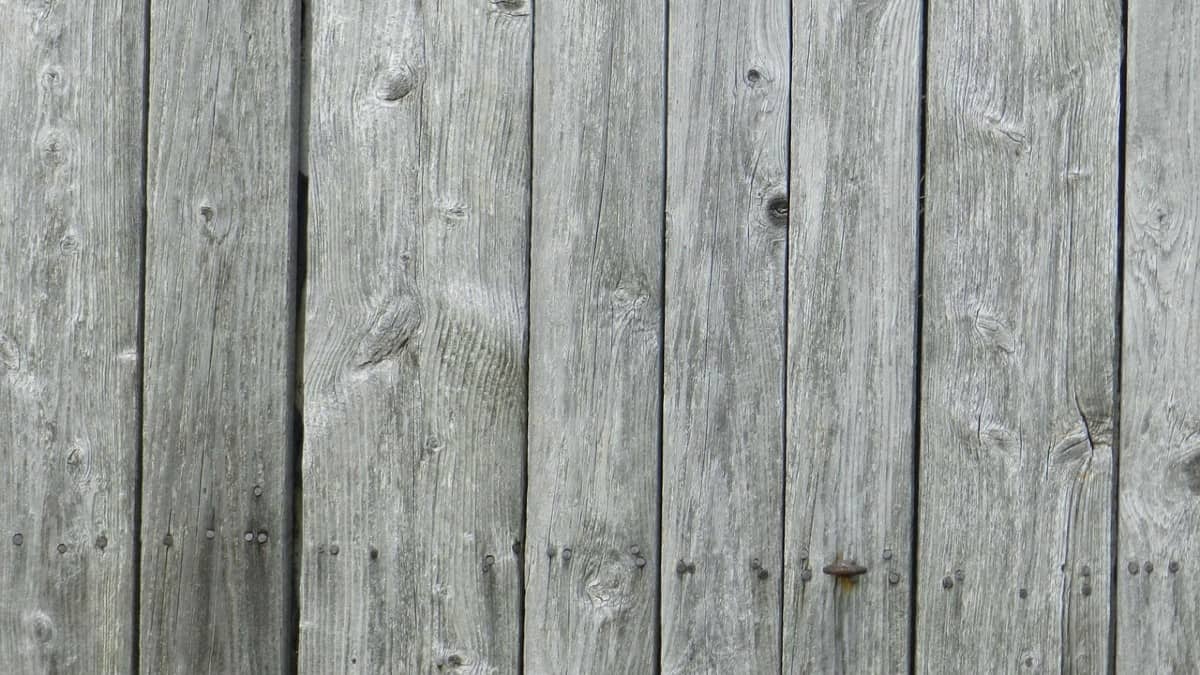Why is reclaimed wood so expensive? What are the advantages? What are the drawbacks? It can be even more expensive than other, customary types of wood. In this article, we will answer several questions:
Is this expense justified? Why is it an eco-friendly alternative and are there any problems with this? How can you get a “rustic” look to your project (Such as wall paneling or DIY decor) without having to use expensive reclaimed wood?
The woodworker can choose from many materials in today’s world. However, some of the choices are incredibly expensive. There are many factors to consider when making a decision. So, let’s begin …
What does reclaimed wood mean?
It’s always good to define terms at the outset. So, what do we mean by reclaimed wood? Is it the same thing as salvaged wood or recycled wood?
By reclaimed wood, we are referring to wood that has been used before for some other purpose. For example, the walls of an old Barn can become paneling or wall decor. Boxcar planks are other popular sources of reclaimed wood. In addition, old wooden barrels can become reclaimed wood.
Salvaged wood usually refers to wood that has not been used for some project in the past. So, it could be something like an old tree, branches, driftwood, or similar.
Generally, recycled wood refers to wood that has been processed. Examples of this are sawdust and wood fuel pellets.
Reclaimed wood is very expensive. Why would anyone want to use it?
Advantages of reclaimed wood
There are many advantages to reclaimed wood:
- It has a “rustic”, “beautiful”, “natural” appearance.
- Reclaimed wood seems to be denser than conventional wood from the lumber yard. For instance, it can be up to 40 points harder on the Janka hardness test (The Janka Hardness Test measures the hardness of a wooden surface. In it, Oak is 2680 while Balsa is 70).
- Reclaimed wood is often dried in a wood kiln. This decreases moisture content and makes it less likely for the wood to warp. For instance, there will be fewer gaps between planks when you are putting up reclaimed Barn Board paneling.
Is reclaimed wood good for the Earth?

There are many advantages to reclaimed wood:
- You are re-using a natural resource and the process is more eco-friendly.
- You do not need to cut down a tree. So, the tree can take in CO2 from the atmosphere. It does this because of plant photosynthesis. That’s important in this day and age due to the concern about climate change due to excess CO2.
- You can reduce pollution and extra CO2 in the atmosphere by reclaiming the wood and using the old wood for another purpose.
- To process wood, you cut it down, harvest it, transport it, mill it, an go through other steps. Each step releases CO2. So, you can reduce CO2 by reclaiming wood.
- When you use reclaimed wood, you cut down fewer trees. So, you disturb the habitats for animals less. That is better for the ecosystems of the many creatures that live in the forest. It does not destroy the delicate balance of the natural environment.
- You can earn LEED (Leadership in Energy and Environmental Design) points for using reclaimed materials. LEED is a green building rating system used by the USGBC (U.S. Green Building Council). When you comply with LEED, your green and eco-friendly activities are recognized, and there are other positive factors.
Is reclaimed wood safe?
Reclaimed wood has often been exposed to the outdoors for a long time. This is the case with Barn Board or Boxcar Planks, as examples. Pests, termites, spiders, larvae, and eggs can be in the wood. So, you should be careful when you bring wood like this into your home.
One source of reclaimed wood is the Thrift Store. You can get it when you buy an old furniture item and pull it apart. However, has the wood been sitting out in the garage or old shed for a long time? Has it been exposed to bugs, mice, spiders, termites, and other creatures? Most wood from the thrift store is OK. However, some items might be infected.

Pieces of reclaimed wood can contain toxins and be harmful to human health:
- Mold can form on the wood. This is a health hazard.
- Reclaimed wood can also contain VOCs (Volatile Organic Compounds). An example is formaldehyde in Medium Density Fiberboard (MDF).
- Old rusty nails can cause tetanus if they break the skin.
- Toxic chemicals such as the wood preservatives Creosote and Pentachlorophenol have been classified by the EPA as possible human carcinogens.
- Lead paint from old wood can chip off and be eaten. Currently, there is no safe level of lead exposure.
Source for this information
How to treat reclaimed wood
Why would anyone want to use reclaimed wood when there are so many safety hazards? Well, preparation steps can mitigate some of these risks. However, these steps take time, effort, and increase the overall cost:
- Heat Treating the wood in a Kiln – Wood is often heated to a temperature of about 120 degrees or so for 24 hours or even longer. This kills parasites, larvae, and eggs. It can also lower the moisture content of the wood and reduce warping.
- The wood can be washed off – This can be done with a power washer, brush, or similar tool. While you can certainly remove surface contamination, you can’t get all the parasites.
- Remove nails from wood – Magnets can detect ferrous nails. Rusty, sharp nails are hazards. You should remove them.
- Plane or Mill the wood – Do this to remove paint, varnish, or other VOC source.
- Avoid certain woods – Certain woods (Such as Particleboard and Medium Density Fiberboard (MDF) can contain formaldehyde. Also, avoid Volatile Organic Compound (VOC) sources such as Varnish, Creosote, or Pentachlorophenol.
In summary, these processing steps increase the total cost of reclaimed wood. However, they are well worth it.
Are there alternatives?
Reclaimed wood has a natural beauty and “rustic” appearance that might be a very good choice for your individual project. However, you don’t need to “break the bank” by working with this very expensive material. Below are several alternatives that might meet your needs:
- An alternative to Barn Board – Barn Board has been exposed to the environment for a considerable time and has a characteristic gray, weathered, aged surface. If you want to avoid removing nails, cleaning, and kiln drying, you can use ordinary T1-11 paneling. Stain with a gray Barn Board stain and attach panels to the wall with furring strips. Take care to minimize gaps between the interlocking pieces. As a finishing touch, you can hammer the exposed surfaces of the boards with decorative wrought iron nails. The finished product is not as authentic as actual Barn Board. However, it is far less expensive and might give you the “look” you were trying to achieve with reclaimed wood.
- As described in the Little House in the Suburbs blog, you can create a “rustic” looking barrel by painting a plastic one. This is a way of avoiding the parasites and other contamination found on old barrels.
- As described in the Shanty-2-Chic blog, laminate flooring can replace reclaimed wood. This is a realistic and cost-effective alternative.
Why use reclaimed wood?
Why should you use reclaimed wood at all? After all, it’s a terribly expensive material. Well, there are several reasons why you might want to use it:
- Reclaimed wood has natural beauty – This is really a personal decision. You certainly don’t want to make your project look “phony” or “non-authentic”. However, can you get by with a cheaper alternative? This is really up to you and depends on the “look” you want.
- Eco-friendly materials are really important to you – So, you don’t want to purchase wood from my lumber yard and “cut down one more tree”. You’re concerned that the felled tree no longer absorbs atmospheric CO2.
Conclusion
So, why is reclaimed wood so expensive? Reclaimed wood is a rustic and beautiful alternative that greatly enhances the appearance of a project. This is due to the many processing steps, the cost of obtaining the material, and many other factors.
Reclaimed wood is an eco-friendly alternative to other building materials. It looks beautiful, rich, and natural. However, you may not need reclaimed wood for your project.
Did you like this post? If so, why not share it? Also, be sure to follow me on Pinterest.
Related Posts:
How to clean pallet wood for indoor use
Is wood recyclable or garbage?


